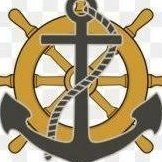Sockets: reverse L and N - consequences?
-
Recently Browsing 0 members
- No registered users viewing this page.
-
Topics
-
-
Popular Contributors
-
-
Latest posts...
-
7
USA Judge Halts 'Alligator Alcatraz' Over Everglades Threat
Tug - While on line, tell us again how articulate Kamala Harris is. I missed hearing this from you. -
6
For Aussies: Alternative Australian Share Brokers to Commsec
Atles Wealth in Qld. Epic. -
45
USA Trump Slaps India with 50% Tariff for Russian Oil Buys
It will het the redhats harder because they have less money. I wonder what the tariff on European and Israeli guns is, that will really hurt. -
23
Blood Pressure Measuring Universal Standard ?
A bit off topic. The stroke rate on that is quite high, but then your speed is much faster than mine. I'd only get a stroke rate up to 30 if I was doing intervals. -
18
An Operating Manual for Understanding the Thai Mind
I just think they are mostly nice people with very limited perspectives on many things. I have accepted the fact that I will mostly agree to disagree with Thai people. They will never understand me and I will never understand them. -
137
What happened to Rock n Roll
Okay, I get your point. But I'm not diving back into the archives of Buddy Holly or Bill Haily and the Comets either. To me, maybe my age, rock (by that I refer to hard rock and filling arenas and selling millions of albulms to die-hard fans) begins with cream/Zeppelin and goes through the 70's and 80's where it starts to be challenged by other genres like new wave, disco, punk, (and pop music - which exands exponentially propelled by the recording industry and radio). The point of the thread is what happened to rock - I've been giving giving my perspective from my age group. Late boomers I guess? But others may have different views.
-
-
Popular in The Pub








Recommended Posts
Create an account or sign in to comment
You need to be a member in order to leave a comment
Create an account
Sign up for a new account in our community. It's easy!
Register a new accountSign in
Already have an account? Sign in here.
Sign In Now